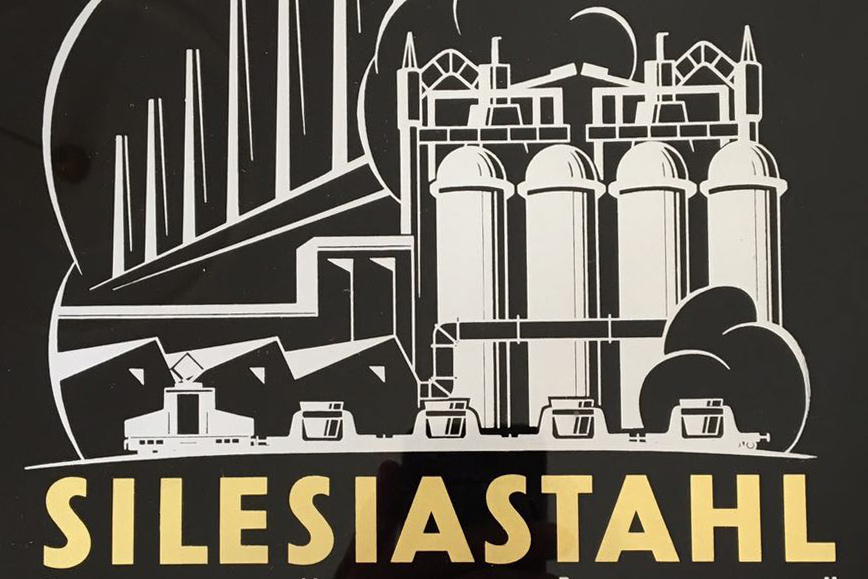I was in the flea-market at the Naschmarkt in Vienna in 1984 when I saw for sale a broken mechanical wall-calendar. With its black, white and gold decoration, it looked like something between Jugendstil (Austrian art nouveau) and Italian Futurism – I was reminded of a work by Umberto Boccioni in The Tate Modern.
Further investigation showed the calendar, fronted with glass and mounted on wood, to be an advertising device for the “Verkaufsgesellschaft der Vereinigte Oberschlesische Hüttenwerke AG Gleiwitz”.
So far as I can see, this was an iron and steel works founded in 1926 at a time when Gleiwitz (now Gliwice, in Poland, since 1945) was part of Germany.
The calendar is a reminder of the tumultuous history of Central Europe. The Wikipedia entry on Silesia, most of which is in Poland, starts with a map outlining “Austrian Silesia, before 1740 Prussian intervention”; and the historical section refers to Celts, Slavic tribes, Moravia, Bohemia, Poland, the Mongol invasion, German settlement, Silesian duchies, the Habsburg monarchy, the Thirty Years’ War, Polish rule, Prussia, the Napoleonic era, the German and Austro-Hungarian Empires, and World Wars I and II.
A fake attack on a radio station in Gleiwitz on 31 August 1939 by German forces served as a pretext for Nazi Germany to invade Poland at the start of World War II. The city was also the location of a sub-camp of the Ausschwitz concentration camp.
The complex and sometimes grim history of Gleiwitz/Gliwice raises a question as to the extent to which one can legitimately appreciate an object which, although outwardly apparently unexceptionable, recalls that history. I would welcome your thoughts on this.
Meanwhile, for now, I continue to use the wall-calendar, although the glass front has splintered somewhat in my many moves since 1984. Back then I restored it by mending the paper strip behind the glass face of the calendar with a stapled strip of denim from an old pair of jeans, and it is still – just – in working order.

